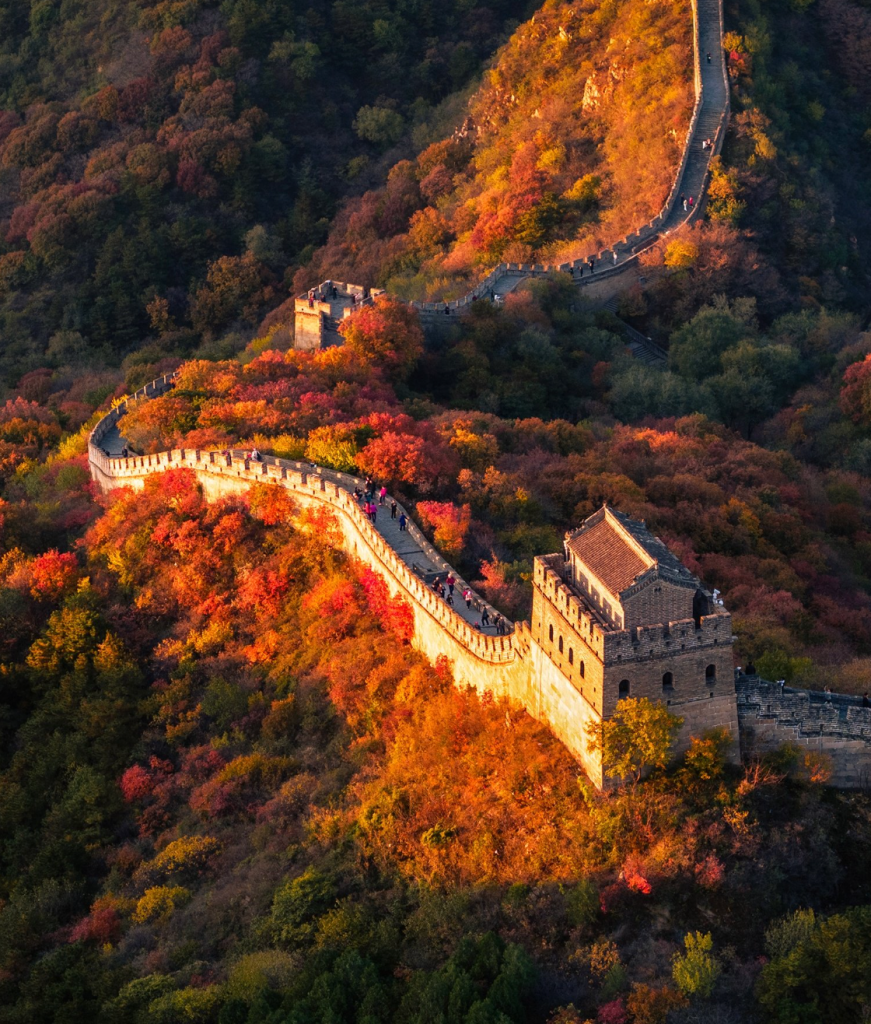The Great Wall of China is one of the most extraordinary achievements of ancient engineering, but its earliest beginnings were far humbler than the imposing fortifications most travelers see today. Long before the Ming Dynasty rebuilt the Wall with bricks and stone, earlier rulers experimented with simple defensive lines made of earth and wood.

Early Attempts at Border Defenses
Historians generally agree that the first attempts at what would later become the Great Wall appeared during the Spring and Autumn Period (770–476 BC) and the Warring States Period (475–221 BC). At that time, China was divided into rival states, and each built walls along its borders to protect against invasions from neighbors and nomadic tribes in the north.
States such as Qin, Wei, Zhao, Qi, Yan, and Zhongshan are believed to have constructed these early walls. Built mainly with rammed earth, they were intended to resist simple weapons like spears, arrows, and swords. Though primitive in form, these early defenses revealed a growing awareness of the need for large-scale fortification.
Qin Shi Huang and the First Imperial Great Wall
When Qin Shi Huang unified China in 221 BC, he inherited a fragmented landscape of walls belonging to the former states. To secure his new empire, he ordered General Meng Tian to connect and extend them. This marked the beginning of the first imperial Great Wall.
The Wall served multiple purposes:
- It marked the empire’s northern boundary.
- It defended against raids by the Xiongnu nomads.
- It symbolized Qin Shi Huang’s control over the newly united states.
Although records vary, it is thought that about 1,200 miles (1,930 km) of walls were constructed during his reign. The work demanded immense labor, involving soldiers, peasants, and convicts who toiled under harsh conditions.
Materials and Construction Techniques
Building such a massive structure with limited technology required ingenuity. The builders used stones in mountainous regions and relied on rammed earth in the plains and deserts. The walls typically rose between 5 and 9 meters high and were about 8 meters wide, with a roadway on top for patrols. Watchtowers, placed at regular intervals, allowed soldiers to send signals using smoke by day and fire by night.
The Legacy of the Earliest Walls
Though time and erosion have erased much of Qin Shi Huang’s Wall, its significance endures. Later dynasties repaired and expanded it, but the idea of a defensive frontier stretching across northern China began here. Even when its strategic role declined during the Tang Dynasty, the Wall remained a symbol of unity and endurance.
Today, the scattered remains of these early walls remind us of the ambitions of China’s first emperors and the determination of the countless workers who gave shape to a vision that would last for centuries. The early Great Wall was not yet the stone giant that fascinates millions of visitors, but it laid the foundation for one of the greatest monuments of human history.